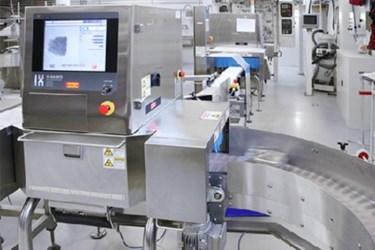X-Ray Inspections Systems: Well Worth The Cost Of Investment
By Melissa Lind, contributing writer

X-Ray inspection offers more than just compliance with regulatory standards. Even though the technology comes with upfront costs, the rewards are well worth the investment. By increasing your productivity, dramatically reducing final-product contamination, avoiding costly recalls, and for cause inspections, implementing X-Ray technology into your production can improve profit margins
X-Ray inspection is actually a moderately-priced technology that offers benefits through high flexibility that other food-contamination systems can’t easily provide. It isn’t just detection of foreign objects in food-processing lines; it also helps to mitigate risks of releasing a product that will ultimately cost your company in terms of revenue lost from recalls and decreased customer loyalty. It can do this through several means:
Ability For QC To Be Implemented At Any Production Point
X-Ray technology is the most flexible in terms of the ability to control quality at virtually any point in your food-production line. It has the ability to detect irregularities from raw materials all the way through the end product, even after products have been packaged. Most systems can be easily integrated with existing production equipment. The only drawback is that X-Ray systems don’t work well with metallic packaging.
Guest Column: Food-Safety Regulations Are Steering The Evolution Of Product Inspection
Appropriate For Many Food And Beverage Sectors
From poultry, to baked goods, confectionary to beverages, X-Ray inspection systems work for many different sectors of the food industry including:
- Meat or seafood processing
- Dairy products
- Dry and bulk goods
- Snack and baked foods
- Beverages or packaged liquids
These systems can also provide analysis of consistency, count, and even fat analysis, making it more versatile than almost all other technologies.
Maximizing Labor And Resource Efficiency
Most X-Ray systems are fully automated with digital interfaces. Installation is simple, requiring little calibration. Ultimately, it can reduce your labor costs by allowing a reallocation of workers to other critical areas. However, the biggest advantage, in terms of resources, may be that it requires little training to use efficiently. Your company won’t be able to completely eliminate manual inspections, but you can significantly reduce costs in this area.
High Accuracy In Product Rejection
X-Ray technology detects multiple types of contaminants, including minute solid fragments. In addition, the other abilities of X-Ray systems make it more valuable than most other technologies. X-ray systems can detect irregularities such as:
- Bone, metal, glass, high-density plastic, stone, and other solid body contaminants
- Air pockets
- Incorrect product count or false-fill level
- Missing product inserts or components
- Inadequate seals or compromised lids
- Conglomerations of solid or liquid products
From raw ingredient inspection to the final product, X-Ray technology can detect what humans can’t, saving you from costly and embarrassing recalls.
White Paper: How To Select CPPs For X-Ray Inspection Systems
Brand Loyalty And Consumer Protection
How much is your brand loyalty worth? In addition to the obvious benefits of consumer protection and regulatory compliance, avoiding costly mistakes by preventing them eliminates a lot of your company’s risk. With the cost-effectiveness and flexibility for multi-point installation, many manufacturers have established the value of multiple systems at several, critical-contamination points within the same line.
